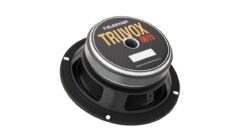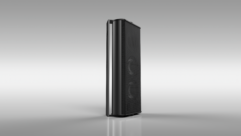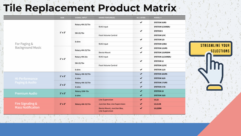
JBL AWC129 Loudspeaker Review
Dec 14, 2012 4:24 PM,
Reviewer: John McJunkin
A weather-resistant unit with quality reproduction.

JBL AWC129
Since the very first moment that loudspeakers were used outdoors for public address, paging, and eventually music reproduction, the compromise has always been quality reproduction versus resistance to the elements. Outdoors, we give up some accuracy in reproduction in exchange for weather resistance. In the studio, we give up weather resistance in exchange for accurate reproduction. This is obviously a bit of a silly comparison, but it makes the point: Weather resistance is not the least bit important in the studio environment, but quality reproduction is a desirable attribute in all speakers, indoor or out. To accomplish studio monitor quality outdoors would be a pretty tall order, but there are manufacturers that get closer and closer all the time. JBL Professional introduced the AWC129 all-weather compact two-way coaxial loudspeaker at InfoComm this summer. This is an example of a speaker that advances quality reproduction while maintaining solid weather resistance.
The AWC129 is based on a 300mm (12in.) low-frequency driver. (JBL also offers a version based on an 8in. LF driver, the AWC82.) The AWC129’s LF driver is Kevlar-reinforced, with a high-temperature 75mm (3in.) voice coil employing saturated-gap magnet geometry to reduce distortion. The exit compression HF driver features a 1in. high-temperature polymer voice coil and a 1in. diaphragm. The HF driver is coaxially loaded through the center of the LF driver, which facilitates a smaller enclosure than what would normally be necessary for a two-way system with a 12in. LF driver. I must say that I really am impressed with the compactness of the cabinet; its face is 15.8in. square. The crossover between the two components is located at 1.5kHz, a 12dB/octave low-pass to band-limit the LF driver, and an 18dB/octave high-pass to band-limit the HF driver. A conjugate network is also employed with the high-pass filter to keep impedance consistent above the crossover frequency, contributing to a flatter frequency response.
The nominal impedance of the speaker is 8Ω, but a multi-tap transformer is built into the system to facilitate use in 70V and 100V distribution systems as well. JBL’s specifications indicate a ±3dB frequency response of 80Hz to 20kHz, and based on my subjective listening, I would say that this claim is true. They also show a ±10dB frequency range of 55dB to 20kHz, also true based on my ear. I did all of my listening with zero equalization or dynamics processing of any kind—straight from source to amplifier to speaker. To my ear, the speaker sounds overall a little mid-rangy, with an emphasis in the upper mids, but not in an unpleasant way. There is a bump in the frequency response starting just above 4kHz, sloping gently up about 4dB to just below 7kHz, at which point it more steeply climbs by another 5dB to just above 8kHz, then turns back south and slopes down to a net gain of 0dB right at about 20kHz—essentially a linear slope.
Whether that bump is intentional, I wouldn’t speculate, but it does increase intelligibility substantially, an attribute that really appeals to me not only as an audio engineer but as an occasional patron of a restaurant or a pub with paging. Muffled, unintelligible announcements truly perturb me. The AWC129 is crisp without being brash. The low end is not overbearing, to be sure, but it’s definitely sufficient for this speaker, particularly with a little equalization. And of course, any loudspeaker is going to benefit from equalization that is tuned for the speaker’s location, environment, and typical SPL. This speaker is no exception—just a bit of boost in the low end and scooping in the mids along with moderate compression delivered really solid, clean music reproduction at potent SPL with no audible distortion. The speaker is reasonably efficient, with sensitivity rated at 96dB. It really does sound very good, and won’t require a subwoofer unless really deep, round bass is necessary.
Having established that it sounds good, we turn to the weather resistance of the enclosure. It’s rated IP-56 per the IEC 529 standard. The “5” indicates that the cabinet is strongly resistant to particles as small as dust. A limited ingress of dust is permitted, but not enough to create a harmful deposit. The “6” signifies that the enclosure is protected from strong jets of water from all directions. This rating is valid for any installation in which the speaker is tilted more than five degrees toward the ground. The IP-56 rating is very robust, and will meet the needs of a substantial proportion of contractors in the vast majority of environments. Of course, there are particularly harsh or environmentally challenging applications that may require a speaker to be able to withstand complete immersion in water on a temporary basis, for instance. This speaker doesn’t quite meet that requirement, at least in terms of water, but is only one designation down from it.
The enclosure is formed of ABS plus fiberglass, and is, as JBL says in its literature, “heavily braced” for good low frequency performance. The cabinet features an extra thick zinc-laden steel grille, which is powder-coated to reduce corrosion, and backed with open-cell foam and a high thread count mesh. To my ear, the foam and mesh are essentially transparent from an acoustical standpoint. Two M-10 points facilitate attachment of the included U-bracket, and an additional M-6 point facilitates a safety attachment. Signal is introduced into the speaker via CE-compliant barrier strips intended to accommodate open lugs or spade lugs. There are a total of four screws: positive and negative input, and positive and negative throughput. A recessed rotary switch can be accessed in the same recessed area to determine input level. The speaker’s 200W 70V/100V transformer can accommodate 200W, 100W, 50W, and 25W at 70V, and 200W, 100W, and 50W at 100V. A direct 8Ω low-impedance setting is available as well.
Bottom line, the JBL Professional AWC129 sounds very good, delivering low distortion, consistently dispersed reproduction across a broad frequency spectrum. Its compact-but-sturdy ABS and fiberglass enclosure is small enough to be deployed in numerous locations, and the horn delivers constant directivity, for a consistent pattern. It’s robustly weather resistant as well, so we get the best of both worlds: great fidelity along with constant performance resulting from resilient weather resistance. The enclosure is paintable for the sake of aesthetic considerations, and it can be placed unobtrusively due to its remarkably small size. This is an excellent exterior loudspeaker for applications that require clean, clear audio at moderate to loud SPLs in somewhat harsh environments with dust and water issues. It’s priced for a strong value as well. This speaker is certainly worth a look.
PRODUCT SUMMARY
Pros: Compact, consistent dispersion, great fidelity, substantial SPL before distortion
Cons: Just the slightest bit mid-rangy
Applications: Sports facilities, racetracks, fairgrounds, skating rinks, water parks, pools
Price: $945 ($749 street)
SPECIFICATIONS
Frequency Range (-10dB)1: 55Hz – 20kHz
Frequency Response (±3dB)1: 80Hz – 20kHz
Coverage Pattern2: 90°x90°
Directivity Factor: 10.1 (1k – 16kHz)
Directivity Index (DI): 9.5dB (1k – 16kHz)
Long-Term System Power Rating (IEC)3: 400W (1600W peak), 2 hrs; 250W (1000W peak), 100 hrs
Sensitivity (2.83V @ 1m): 96dB (Ave 80Hz – 20kHz)
Maximum SPL4: Direct 8Ω: 122dB (peaks of 128dB); 200W Tap: 119dB
Crossover Network: 1.5kHz, 3rd order (18 dB/oct) high-pass plus conjugate to HF, 2nd order low-pass to LF
Nominal Impedance: 8Ω
Transformer Taps: 70V: 200W, 100W, 50W, 25W; 100V: 200W, 100W, 50W
Low Frequency Driver: Kevlar-reinforced cone with weather treatment, 75 mm (3in.) voice coil
High Frequency Driver: 25mm (1in.) diaphragm and voice coil diameter, high temperature polymer diaphragm, patented design, fluid-cooling.
HF Driver Protection: Minimum audibility SonicGuard HF overload protection
Enclosure: ABS with glass enclosure, heavily braced
Attachment: Two M10 (fine-thread) points for included U-bracket; M6 secondary safety attachment point on back panel.
Grille: Corrosion-resistant zinc-rich extra-thick powder-coated steel grille, three-layer assembly with foam and woven poly mesh backing.
Environmental: IP56 per IEC529, with a minimum 5° downward aiming angle. Exceeds Mil Spec 810 for humidity, salt spray, temperature and UV; ASTM G85 for salt spray (168 hours).
Dimensions: 15.8”x15.8”x17.5”, cabinet 18.5in. depth with gland nut 21.4in. including bracket extending to back
Colors: Available in gray (similar to Pantone 420C) and black (-BK)
Net Weight: 35.0lb., 41.5lb. with U-bracket
Shipping Weight: 51.5lbs.
John McJunkin is the principal of Avalon Podcasting in Chandler, Ariz., and produces and co-hosts a top-rated morning radio talk show in Phoenix. He has consulted in the development of studios and installations, and provides high-quality podcast and voice production services.










